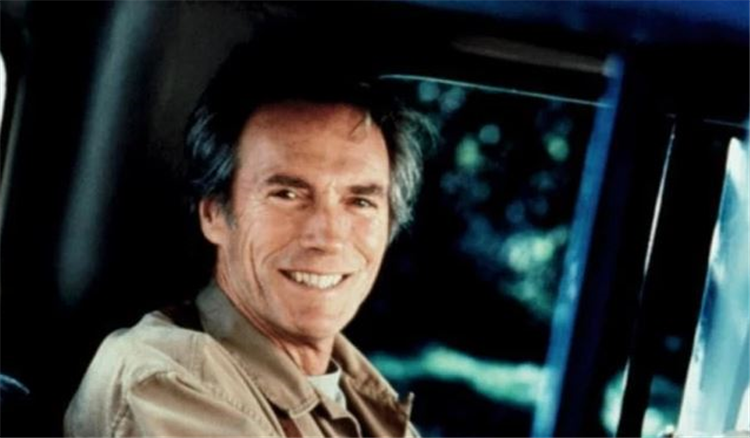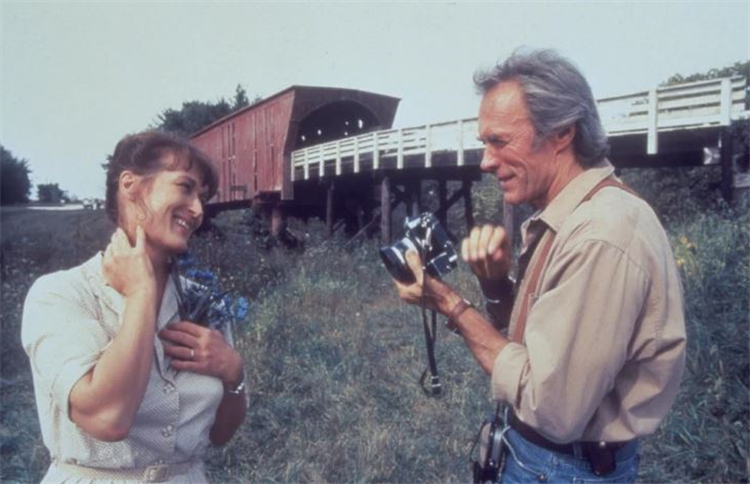When you search for Clint Eastwood’s filmography, even the most seasoned cinephiles can’t help but tip their cowboy hats in awe. With a career spanning decades, the acclaimed actor-director, 94, has become a veritable titan of Tinseltown. The magic began to sparkle on the Hollywood horizon when the Western film Two Mules for Sister Sara marked his ascent, featuring his name alongside Shirley MacLaine—a rare sight indeed!
And then you might wonder what it takes for him to consistently steal the show, even when sharing the screen with luminaries like Meryl Streep in The Bridges of Madison County? Also note that he was juggling the directing duties of this flick, which was distributed by Warner Bros. Entertainment.
The movie was a chef-d’œuvre, garnering universal critical acclaim and making waves in Hollywood circles, with Streep earning an Academy Award nomination for Best Actress. Many would agree, including Streep herself, that Eastwood’s deft touch saved what could have been a sinking ship—originally passed over by Steven Spielberg—from box-office oblivion.
What Did Clint Eastwood Do to Save The Bridges of Madison County?

In a plot twist straight out of Hollywood lore, Clint Eastwood swooped in to rescue The Bridges of Madison County in just 24 hours, turning the film into an Oscar-nominated sensation for Meryl Streep.
The Bridges of Madison County had become a proverbial hot potato, bouncing from one director to another—three in total (via EW). Warner Bros. had already faced a merry-go-round of creative challenges, with Steven Spielberg once producing and four different writers giving it their best shot, yet the film seemed destined for the scrap heap.
But then, like a knight in shining armor, Eastwood entered the scene and turned what seemed like a sure-fire flop into a runaway success. After an intense phone call, he convinced the studio that he was the man for the job. “Give me 24 hours,” he said, and like magic, he transformed the project overnight.
Eastwood didn’t just direct; he waved his wand and cut $1.5 million from the budget, making Warner Bros. cheer for their decision. His enthusiasm was so contagious that it revived the project’s momentum and gave it the jolt it needed. The Cry Macho director said:
You guys have blown enough time–Everyone is going to move on to something else.
He infused it with a new lease on life, turning it from a potential disaster into a cinematic gem. Lennie Niehaus, the film’s music composer, perfectly noted:
Clint has a way of taking something and making it his own.
Eastwood’s fresh perspective was like a breath of fresh air that revitalized the project so effectively that even Streep couldn’t keep her praise under wraps.
Meryl Streep on Clint Eastwood: Director Who Knows What Works

Meryl Streep, who starred alongside Clint Eastwood in The Bridges of Madison County, couldn’t help but marvel at his knack for winning over audiences. She said (via Esquire):
He banked an enormous amount of credit with the male audience in the early part of his career, when they were eager to imagine themselves as whatever character he was playing.
And then he sort of brought them into material that they never would have gone to. Starting with maybe Unforgiven, he started bringing them along on a left-hand turn, where violence wasn’t the thing you got your rocks off with. It was something horrible. And only he could bring them there.
Streep emphasized that Eastwood had a unique ability to guide his audience through these complex, darker themes. His reputation and skill allowed him to lead viewers to these challenging narratives in a way that few others could.
Eastwood himself expressed his perspective on self-awareness and self-examination, in relation, to his work and career:
But I don’t know if I’m that aware. I’m not that self-examining. I’ve always felt that if I examine myself too much, I’ll find out what I know and don’t know, and I’ll burst the bubble.
Since Eastwood took the reins as director, his loyal fans, who were usually all about Westerns and high-octane action, flocked to the movie like bees to honey. Ergo, his knack for revitalizing projects is like adding a secret sauce to a bland dish—suddenly, it goes from ‘just okay’ to ‘out of this world!’
